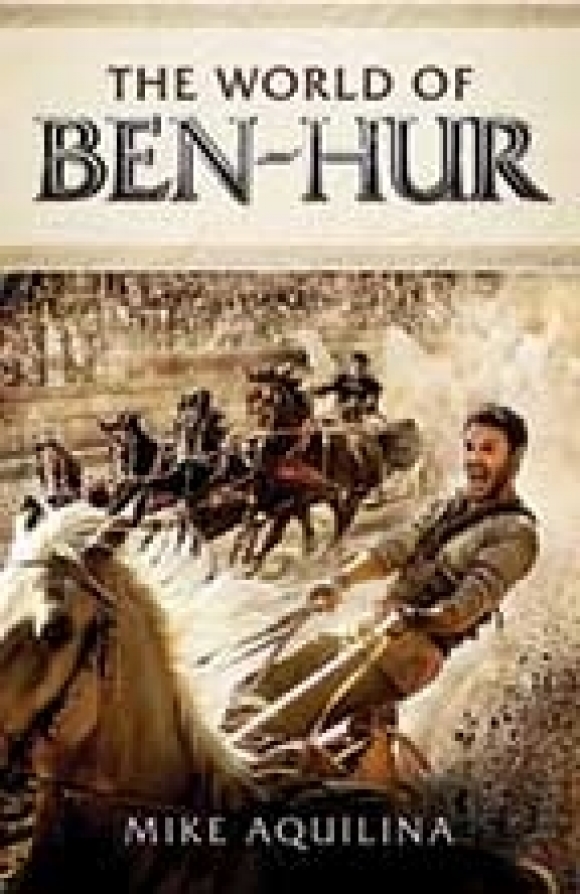Ben-Hur’s long history is captivating

Some authors and critics sniff at best-sellers. I suppose the idea is that a novel appealing to so many thousands may contain vivid action or fascinating characters, but somehow fall below what critics may regard as the “standards of literature.” In the last hundred years in particular, we have seen a shift in favor of the new and revolutionary in literature over more traditional forms of storytelling. Most critics, for example, would regard Faulkner’s The Sound and The Fury as literarily superior to best-selling Erich Marie Remarque’s All Quiet On The Western Front, both of which appeared in 1929.
Although I would tend to agree with that particular appraisal, few general readers would even today choose to read the Faulkner novel over Remarque’s story of World War I trench warfare. The former is obscure in plot, its dense prose and stream of consciousness techniques making a prickly barrier to the average reader. No, books become best-sellers because they appeal to a wide variety of readers and tell a great story.
The best-selling American novel of the nineteenth century was Ben-Hur: A Tale of the Christ. Published in 1880, Ben-Hur surpassed in sales the record long held by Uncle Tom’s Cabin and would hold that title for 50 more years, when Gone With The Wind became the newest champ.
Written by Lew Wallace, a former general in the Union army, Ben-Hur supplies the reader with intricate descriptions of the people and places of the Middle East during the time of Christ. Wallace was a meticulous researcher, traveling great distances to research the workings of a trireme or the descriptions of a temple. President Garfield was so impressed by Wallace’s knowledge and his recreation of the Middle East that he sent Wallace to Constantinople as the United States’ minister to the Ottoman Empire.
Like so many other best-sellers of the past century, Ben-Hur was also made into a movie — not just once, but four times. (The 1907 version, which featured a chariot race on a beach using firemen’s horses, served as the test case in which the law ruled that the budding motion picture industry had to pay for books they put on film.) All four movies had as their focal point the chariot race, with each successive movie making the race more and more dramatic, both through advancements in technology and through the actors and their directors.
Despite its success, Ben-Hur received a battering from early critics. As Mike Aquilina points out in The World of Ben-Hur (Sophia Institute, 2016, 168 pages, $14.95), they attacked the book for the same reasons some of them attack today’s best-sellers: wooden dialogue, ridiculous coincidences, a contrived plot. When your enthusiastic readers include personages like Ulysses S. Grant and Jefferson Davis, however, few are paying much attention to those critics.
Related Items
Aquilina spends some time on Ben-Hur’s creator and the way he cultivated the book. Lew Wallace began writing as a challenge to his own spiritual faith — he was an agnostic — and though he never joined an established church, became convinced of the divinity of Christ once he had completed writing his novel.
Most of The World of Ben-Hur, however, looks at the Roman Empire in which Wallace had set his story. Here Aquilina includes chapters on topics presented in the novel: the Roman political system, imperialism, slavery, the punishment of criminals, leprosy and the establishment of hospitals by early Christians, the brilliant construction of the trireme contrasted with the savage lot of the prisoners who manned the oars of this war vessel, the gladiatorial contests with their savagery and death, and of course, the chariot races.
To recreate this world, Aquilina uses passages and ideas from Ben-Hur and then presents alongside them writings from the time, particularly by the Jewish writer Josephus and such Christian writers as Tertullian, Gregory of Nazianzus, and some of the writers of the New Testament. Using this blend, he gives readers some general insights into the Ancient World.
Some of Aquilina’s analysis is particularly fine. He raises a question that occurs to many people: why, if the gladiatorial games were so horrific, did people flock to see them for centuries? Why did even Christian emperors face enormous difficulty in trying to ban them? Aquilina demonstrates the power over these spectacles, which could even attract those Christians opposed to them, and offers a comparison regarding our own games. Suppose a college president and his administration decided to do away with football at the school. Aquilina rightly tells us what a ruckus this would cause, leading almost certainly to the sacking of that administration.
One flaw in The World of Ben-Hur is Aquilina’s use of long quotations both from Wallace’s novel and from some of the original sources. In some cases, these quotations run to a page or more. Many of these, particularly the Wallace quotes, would have better served this book had they been cut or paraphrased.
But that is more quibble than quarrel. Amateur historians, lovers of film, and those interested in questions of religious faith should all find some gold in The World of Ben-Hur.
(Jeff Minick is a writer and teacher. This email address is being protected from spambots. You need JavaScript enabled to view it..)









